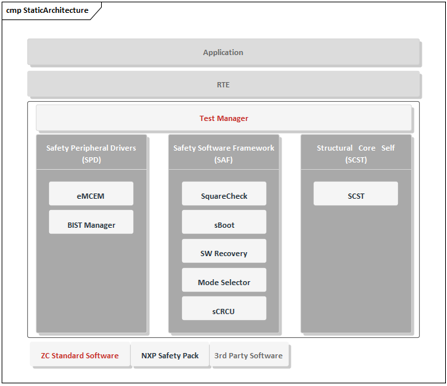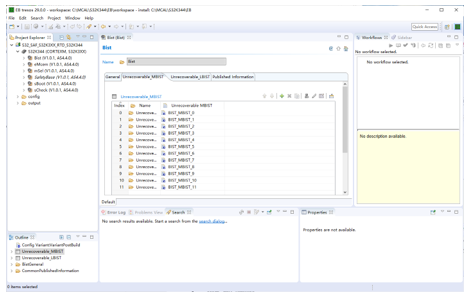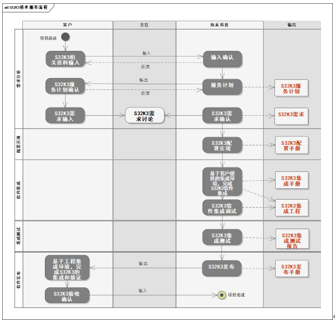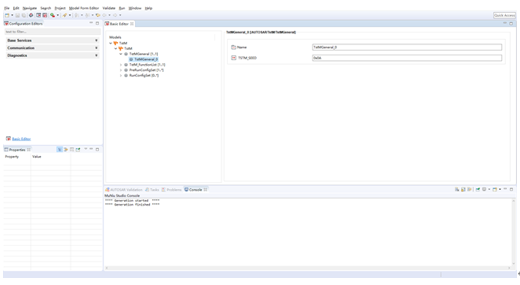- 知从MCAL产品定制开发服务
- 知从VECTOR FBL产品工程服务
- 知从基于恩智浦S32K3系列芯片功能安全包可提供的服务
- 知从LIN一致性测试服务
- 知从科技基于英飞凌MOTIX™系列芯片 提供基础软件解决方案
- 知从基于恩智浦S32K3系列芯片功能安全包可提供的服务
- 知从E2E测试服务
- 从TRICORE平台到ARM CORTEX-R52/R52+的迁移指南
- 知从RTE测试服务
- 知从木牛恩智浦S32K1信息安全服务手册
- 知从嵌入式自动化测试服务
- 瑞萨RH850 G3MH/G3KH到ARM CORTEX-R52/R52+的迁移指南
- 知从ASPICE SWE04单元测试介绍
- 知从啸天信息安全算法工具(可直接下载试用)
- 知从功能安全工程服务
- 知从SafetyLibrary服务
- 知从VECTORMICROSAR产品工程服务
- 知从MCAL产品工程服务
- 知从ECU控制器开发功能服务
- 知从软件测试工程服务
- 知从HIL测试工程服务
- 知从TESTFACTORY工程服务
- 知从ADAS域控制器英飞凌MCU TC397
- 知从网关产品
- 便携式充电器
- 交流充电桩产品
1.功能介绍

Safety Pack软件架构图

Safety Pack配置界面图
1.1 SAF 介绍
S32K3安全软件框架(Safety Software Framework)提供硬件故障的检测和故障响应机制(单点故障和潜伏故障)。其功能涵盖了如下内容:
Ø BIST - 控制MCU的STCU2模块执行MBIST 和 LBIST 自测试
Ø eMcem - 基于MCU的FCCU模块执行故障收集和处理
Ø sCheck – 通过注入故障并检测故障,实现对MCU内部各种硬件安全机制的诊断
Ø mSel – 基于BIST, eMcem和sCheck的检测和诊断结果,选择MCU的软件工作模式
Ø sBoot – 对某些与安全有关的寄存器执行静态检查,确保这些寄存器的设定值符合要求
Ø sReco – 执行软件故障恢复
通过以上安全机制的实施, 提升客户控制器安全等级, 减少失效影响。
1.2 SPD介绍
S32K3安全外设驱动模块(Safety Peripheral Driver)是SAF的子集,包含上述的BIST和eMcem模块。
1.3 SCST介绍
S32K3安全软件(Structural Core Self Test)组件用于检测内核逻辑中的永久性硬件故障,可以在运行时定期执行实现单点故障检测,其集成与编译器无关,检测代码使用汇编代码编写,无需昂贵的故障模拟工具,即可覆盖诊断所需的检测项。其可达到的安全等级为ASIL B。
2. 知从Test Manager模块介绍
Test Manager模块是由知从在集成Safety Pack到实际工程中时添加的核心管理调度模块,用于管理Safety Pack的测试流程以及管理与应用层的接口。
木牛配置工具界面
功能包括:
Ø Safety Pack中测试的调度(SAF,SPD以及SCST)
Ø Safety Pack初始化
Ø PreRun阶段测试(启动阶段)
Ø Run阶段测试
Ø PostRun阶段测试
Ø 将Safety Pack的检测结果反馈给应用层

3. 项目实施
知从科技可以配合客户项目进行项目实施,主要包含需求分析、配置实现、软件集成、集成测试、软件发布工作。详细过程如下图,单个项目实施周期在8到12个工作周。

项目实施输出物:

S32K3 safety software是由NXP官方提供的软件包,用于帮助客户实现基于S32K3芯片的汽车电子控制器产品的功能安全要求。S32K3 safety software满足S32K3xx Safety Manual的要求的大部分芯片层级的功能安全需求,其中包括了SAF (safety software framework) / SPD (safety peripheral driver) / SCST (core self-test code) / RTD (Real-Time Drivers)内容。
知从针对恩智浦 S32K3系列MCU的S32K3 safety software可以提供相应的集成测试服务。
针对S32K3 Safety software需要根据客户安全需求进行动态配置才能完全覆盖客户的应用需求的特点,我们可以根据不同的客户项目要求进行配置,最终满足客户功能安全部分的工程需求。
S32K3 safety software用于实现芯片MCU的安全机制 ,包括MCU内部模块的测试和硬件安全机制的驱动。
目前,我们服务支持过如下芯片:

S32K3 safety software可应用于有功能安全等级需求的控制器。例如:
Ø 娱乐中控IO控制器
Ø 汽车区域控制器
Ø 电子换挡器
Ø 电池管理系统(BMS)
Ø 电泵
Ø 皮带驱动起动发电机(BSG)
Ø 车身控制器(BCM)
通过将S32K3 safety software集成到汽车电子控制器产品中,最高可满足ISO26262 ASIL-D的功能安全等级要求。

